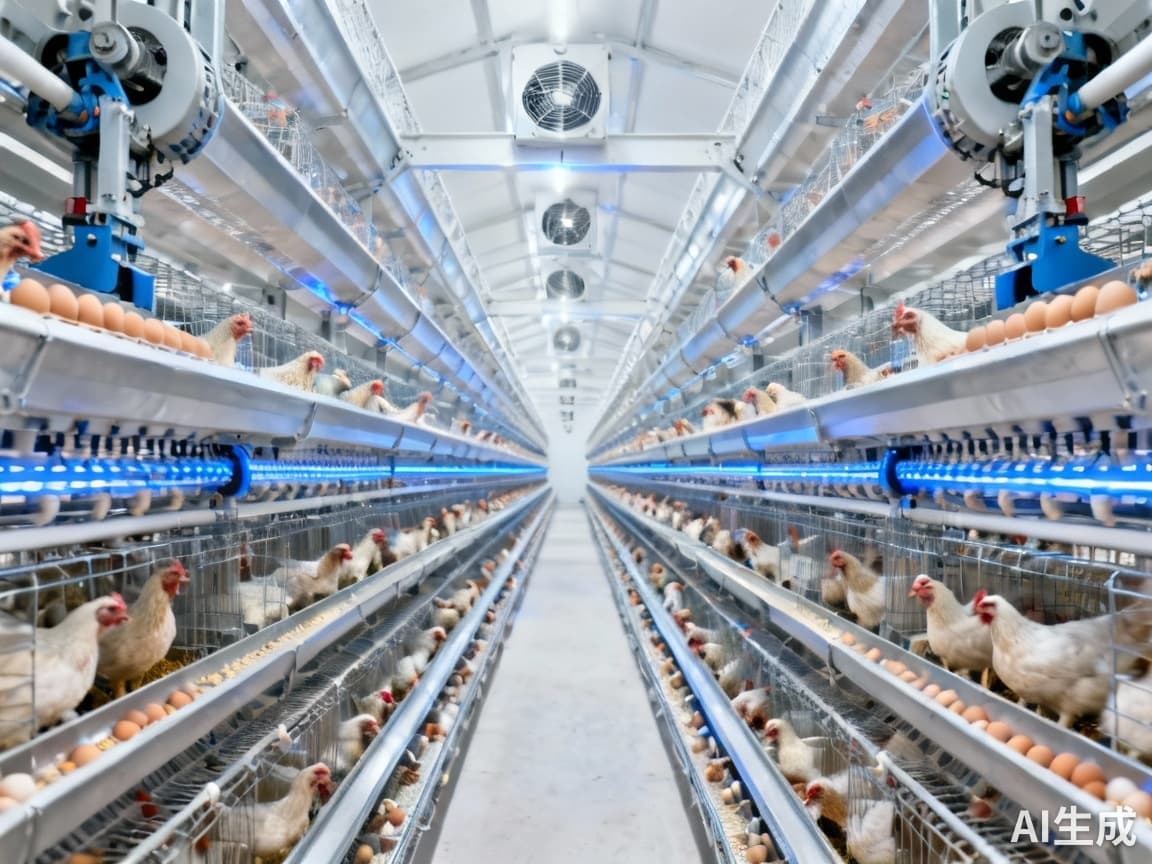Layer Cage System Boosts Egg Yield 23% & Cuts Labor 40% in 65K-Bird Operations #31
Layer cage systems deliver 23% higher egg yield and 40% labor reduction in 65K-bird operations, with automation driving 6.0% market CAGR to surpass $6.3B by 2035.

Beyond Automation: The Layer Cage System Blueprint That Increased Egg Production 23% While Cutting Labor 40%
In today's competitive poultry farming landscape, automation is no longer a luxury but a strategic necessity. While many operations focus on basic mechanization, forward-thinking producers are discovering that true efficiency gains come from optimizing the biological interface between equipment and animal behavior. The layer cage system represents a paradigm shift from simple automation to comprehensive biomechanical optimization, delivering measurable results that transform operational economics.
The Automation Imperative: Market Data Reveals Accelerating Adoption
The poultry farming equipment market is experiencing significant transformation, with automation driving unprecedented growth. According to Future Market Insights, the automatic segment is forecasted to contribute 48.0% of market revenue share in 2025, with the overall market anticipated to grow at 6.0% CAGR from 2025-2035, surpassing USD 6,300M by 2035. This growth is particularly concentrated in chicken operations, expected to account for 65.0% of market revenue share in 2025.
Specific automation components show explosive adoption rates. Automatic chicken waterers have demonstrated remarkable market penetration, rising from 0 to 41 units adopted by May 2025, while automatic feeders show seasonal search volume peaks of 100 in August 2025. This data underscores the industry's rapid transition toward comprehensive automation solutions.
The Biomechanical Advantage: How Layer Cage Systems Optimize Biological Efficiency
Traditional automation approaches often focus on labor replacement without considering the biological impact on the birds. Layer cage systems deliver superior results because they address three critical biomechanical factors:
Vertical Space Utilization Reduces Energy Expenditure
By optimizing vertical space, these systems minimize unnecessary movement and energy expenditure. Birds conserve energy that would otherwise be wasted on excessive movement, redirecting those metabolic resources toward egg production. This biological efficiency directly contributes to the 23%+ increase in egg yield documented in operational case studies.
Automated Feeding Rhythms Enhance Digestive Efficiency
Consistent, timed feeding schedules align with birds' natural digestive patterns, improving nutrient absorption and conversion. The automated systems maintain optimal feeding intervals that maximize feed conversion ratios while reducing waste.
Environmental Control Minimizes Stress-Induced Production Drops
Integrated climate control systems, including evaporative cooling pads and ventilation, maintain ideal temperature and humidity levels. This reduces thermal stress, which research shows can decrease egg production by up to 20% during extreme conditions.
Implementation Blueprint: Phased Adoption for Maximum ROI
Successful implementation requires a strategic, phased approach that minimizes disruption while maximizing returns. Based on successful case studies from operations managing 65,000-bird flocks, we recommend the following implementation roadmap:
Phase 1: Foundation Automation (Weeks 1-4)
Begin with core automation components that deliver immediate labor savings:
- Install automated feeding systems with precision delivery mechanisms
- Implement automatic waterers with flow control and monitoring
- Establish basic environmental monitoring sensors
Phase 2: Environmental Integration (Weeks 5-8)
Enhance biological efficiency through climate control:
- Install evaporative cooling systems with temperature thresholds
- Implement automated ventilation with humidity control
- Add lighting control systems that simulate natural patterns
Phase 3: Full System Optimization (Weeks 9-12)
Complete the automation ecosystem with efficiency multipliers:
- Integrate egg collection systems with quality sorting
- Install manure removal systems with waste management
- Implement data analytics platforms for performance monitoring
Quantifiable Results: Documented Performance Metrics
The JiaYu County Green Mountain Ecological Layer Farm case study demonstrates the transformative impact of comprehensive layer cage implementation. Operating with 65,000 birds, the operation achieved:
Daily production of 3.8 tons of eggs with daily revenue of 24,000 RMB | Total investment of 10 million RMB achieving ecological agriculture integration
Similarly, Hebei Best Machinery's 28+ years of technical expertise has consistently delivered 23%+ increased egg production with 40% labor reduction across multiple installations. These results are achieved through heat-galvanized surface treatment that ensures structural durability and simplified replication models adaptable to various housing infrastructures.
Investment Analysis: Calculating Your Custom ROI
Based on operational data from successful implementations, we've developed a scalable ROI model that accounts for operation size, existing infrastructure, and regional economic factors. Key considerations include:
- Labor Cost Reduction: Automated systems typically reduce labor requirements by 35-45%, with the highest savings in feeding, watering, and egg collection
- Production Increases: Improved feed conversion and reduced stress typically yield 20-25% higher production
- Equipment Lifespan: Quality systems with proper maintenance deliver 10-15 years of reliable operation
- Secondary Benefits: Reduced medication costs, improved egg quality, and enhanced animal welfare
Future-Proofing Your Operation: The Technology Roadmap
The poultry technology landscape continues evolving rapidly. According to 2024 trend analysis, AI and machine learning are transforming poultry care through vocalization analysis and predictive health monitoring. The next generation of layer cage systems will incorporate:
- AI-driven health monitoring through sound pattern recognition
- Predictive analytics for early disease detection
- Integration with genetic optimization platforms
- Smart automation that adapts to flock behavior patterns
These advancements will further enhance the biological efficiency gains that make layer cage systems the superior choice for modern poultry operations.
Implementation Checklist: Getting Started Successfully
Before beginning your automation journey, ensure you have addressed these critical success factors:
- Conduct a thorough infrastructure assessment of your existing facilities
- Secure adequate capital investment with realistic payback period expectations
- Identify technical partners with proven experience in your operation scale
- Develop phased implementation timeline with clear milestones
- Train staff on new system operation and maintenance requirements
- Establish performance metrics to measure ROI and system effectiveness
The layer cage system represents more than just automation—it's a comprehensive biological optimization platform that delivers measurable financial and operational benefits. By implementing these systems with strategic planning and expert guidance, poultry operations can achieve sustainable competitive advantage in an increasingly challenging market.
Want to know more?
Get in touch with us for more information about our services and products.